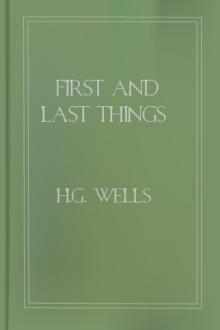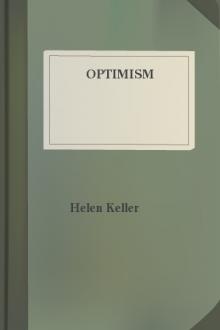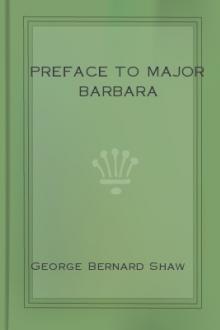Lippincott'S Magazine Of Popular Literature And Science, Volume 26 December, 1880., Various None [best books to read for beginners .txt] 📗

- Author: Various None
Book online «Lippincott'S Magazine Of Popular Literature And Science, Volume 26 December, 1880., Various None [best books to read for beginners .txt] 📗». Author Various None
Face The Reflection Of That Misery Which Filled His Own.
Parting For Ever! No Hopes, No Expectations, No Looking Forward, Nothing
To Whisper "We Shall Meet Again"! "Good-Bye For Ever" Was Written On
Each Face And Echoed In each Heart. Words Could Not Soothe That
Suffering Which Turned This Common Sorrow Into An Individual Torture,
Which Each Must Bear Unaided And Alone; And So They Stood Silent And
With Outward Calm, Knowing That On That Brink Of Woe The Quiver Of An
Eye Might Overthrow Their All But Lost Control.
The Sun Was Sinking Fast; The Gathering Mists Of Eventide Were Rising To
Shadow All Around; The Toil Of Day Was Drawing To Its Close; Labor Was
Past, Repose Was Near At Hand; Its Spirit Seemed To Hover Around And
Breathe Its Calm Upon Those Worn, Tried Souls. Suddenly A Shrill Whistle
Sounds Upon Their Ears And Breaks The Spell: The Women Start And Throw
Their Arms Around Each Other'S Necks. Adam Stretches His Hand Out, And
Reuben Grasps It In His Own.
"Reuben, Good-Bye. God Deal With You As You Shall Deal With Those You'Re
Going Among!"
"Adam, Be True To Her, And I'Ll Be True To Those You Leave Behind."
"Joan!" And Adam'S Voice Sounds Hard And Strained, And Then A Choking
Comes Into His Throat, And, Though He Wants To Tell Her What He Feels,
To Ask Her To Forgive All He Has Made Her Suffer, He Cannot Speak A
Word. Vainly He Strives, But Not A Sound Will Come; And These Two, Whose
Lives, So Grown Together, Are Now To Be Rent Asunder, Stand Stricken And
Dumb, Looking From Out Their Eyes That Last Farewell Which Their Poor
Quivering Lips Refuse To Utter.
"God Bless And Keep You, Eve!" Reuben'S Voice Is Saying As, Taking Her
Hands Within His Own, He Holds Them To His Heart And For A Moment Lets
Them Rest There.--"Oh, Friends," He Says, "There Is A Land Where
Partings Never Come: Upon That Shore May We Four Meet Again!"
Then For A Moment All Their Hands Are Clasped And Held As In a Vice, And
Then They Turn, And Two Are Gone And Two Are Left Behind.
And Now The Two On Land Stand With Their Eyes Strained On The Boat,
Which Slowly Fades Away Into The Vapory Mist Which Lies Beyond: Then
Reuben Turns And Takes Joan By The Hand, And Silently The Two Go Back
Together, While Adam And Eve Draw Near The Ship Which Is To Take Them
To That Far-Off Shore To Which Hope'S Torch, Rekindled, Now Is Pointing.
Good-Bye Is Said To Triggs, The Boat Pushes Off, And The Two Left
Standing Side By Side Watch It Away Until It Seems A Speck, Which
Suddenly Is Swallowed Up And Disappears From Sight. Then Adam Puts His
Arm Round Eve, And As They Draw Closer Together From Out Their Lips Come
Sighing Forth The Whispered Words, "Fare-Well! Farewell!"
_The Author Of "Dorothy Fox"_.
Volume 26 Title 1 (Lippincott'S Magazine Of Popular Literature And Science) Pg 32
Our Grandfathers' Temples.
If On The Fourteenth Day Of May, 1607, When The Rev. Robert Hunt
Celebrated The First Sacramental Service Of The Church Of England On
American Soil, There Had Suddenly Sprung Up At Jamestown The Pillars And
Arches Of A Fully-Equipped Cathedral, Whose Stones Had Remained To Tell
Us Of The Days When They First Enshrined The Worship Of The Earliest
Colonists, Our Most Ancient Christian Church Would Still Be Less Than
Three Hundred Years Old--A Hopelessly Modern Structure In comparison
With Many An Abbey And Cathedral Of England And The Continent.
[Illustration: The Old South, Boston.]
In A Comparative Sense, We Look In Vain For Old Churches In a New
Country, For In Our Architecture, If Nowhere Else, We Are Still A Land
Of Yesterday, Where Age Seems Venerable Only When We Refuse To Look
Beyond The Ocean, And Where Even A Short Two Hundred Years Have Taken
Away The Larger Share Of Such Perishable Ecclesiastical Monuments As We
Once Had. Our Grandfathers' Temples, Whether They Stood On The Banks Of
The James River Or On The Colder Shores Of Massachusetts Bay, Were Built
Cheaply For A Scanty Population: Their Material Was Usually Wood,
Sometimes Unshapen Logs, And Their Sites, Chosen Before The People And
The Country Had Become Fitted To Each Other, Were Afterward Often Needed
For Other Uses. So Long As London Tears Down Historic Churches, Even In
The Present Days Of Fashionable Devotion To The Old And The Quaint, And
So Long As The Rome Of 1880 Is Still In danger From Vandal Hands, We
Need Only Be Surprised That The List Of Existing American Churches Of
Former Days Is So Long And So Honorable As It Is. If We Have No York
Minster Or St. Alban'S Abbey Or Canterbury Cathedral, We May Still Turn
To An Old South, A St. Paul'S And A Christ Church. It Is Something,
After All, To Be Able To Count Our Most Famous Old Churches On The
Fingers Of Both Hands, And Then To Enumerate By Tens Those Other Temples
Whose Legacy From Bygone Times Is Scarcely Less Rich.
[Illustration: King'S Chapel, Boston, In 1872.]
The American Churches Of The Seventeenth And Eighteenth Centuries Were
Plain Structures, Unpretending Without And Unadorned Within; And This
For Other Reasons Than The Poverty Of The Community, The Lack Of The
Best Building-Materials, And The Absence Both Of Architects And Of
Artistic Tastes. It Was A Simple Ritual Which Most Of Them Were To
House, And The Absence Of An Ornate Service Demanded The Absence Of
Ornamentation, Which Would Be Meaningless Because It Would Symbolize
Nothing. The Influence Of The Puritans In Massachusetts, The Baptists In
Rhode Island, The Dutch Reformed In New York, The Lutherans And
Presbyterians In The Middle And Southern Colonies, And The Friends In
Pennsylvania, Whatever Their Denominational Differences, Was A Unit In
Favor Of The Utmost Simplicity Consistent With Decency And Order; And
Though There Was A Difference Between Congregational Churches Like The
Old South In boston And The Friends' Meeting-Houses In Philadelphia, The
Difference Was Far Less Marked Than That Existing Between The New And
Volume 26 Title 1 (Lippincott'S Magazine Of Popular Literature And Science) Pg 33Old Buildings Of The Old South Society, Which The Modern Tourist May
Compare At His Leisure In The Boston Of To-Day. Even The Episcopalians
Shared, Or Deferred To, The Prevailing Spirit Of The Time: They Put No
Cross Upon Their Christ Church In cambridge, Nearly A Hundred And Thirty
Years After The Settlement Of The Place, Lest They Should Offend The
Tastes Of Their Neighbors. The Methodists, The "Christians," The
Swedenborgians, The Unitarians And The Universalists Were Not Yet, And
The Moravians Were A Small And Little-Understood Body In eastern
Pennsylvania.
[Illustration: King'S Chapel Boston, In 1872.]
Nearly All The Colonists, Of Whatever Name, Brought From Europe A
Conscientious Love Of Religious Simplicity And Unpretentiousness: For
The Most Part, The English-Speaking Settlers Were Dissenters From The
Church Which Owned All The Splendid Architectural Monuments Of The
Country Whence They Came; And It Was Not Strange That Out Of Their
Religious Thought Grew Churches That Symbolized The Sturdy Qualities Of
A Faith Which, Right Or Wrong, Had To Endure Exile And Poverty And
Privation--Privation Not Only From Social Wealth, But From The Rich
Store Of Ecclesiastical Traditions Which Had Accumulated For Centuries
In Cathedral Choirs And Abbey Cloisters.
[Illustration: Christ Church, Boston.]
Therefore, The Typical New England Meeting-House Of The Seventeenth And
Eighteenth Centuries May Perhaps Be Taken As The Best Original Example
Of What America Has To Show In The Way Of Church-Building. To Be Sure,
Its Cost Was Modest, Its Material Was Perishable Wood, Its Architectural
Design Was Often A Curious Medley Of Old Ideas And New Uses, And Even
Its Few Ornaments Were Likely To Be Devoid Of The Beauty Their Designers
Fancied That They Possessed. But It Was, At Any Rate, An Honest
Embodiment Of A Sincere Idea--The Idea Of "Freedom To Worship God;" And
It Was Adapted To The Uses Which It Was Designed To Serve. It Stood Upon
A Hill, A Square Box With Square Windows Cut In Its Sides--Grim Without
And Grim Within, Save As The Mellowing Seasons Toned Down Its Ruder
Aspects, And Green Grass And Waving Boughs Framed It As If It Were A
Picture. Within, The High Pulpit, Surmounted By A Sounding-Board,
Towered Over The Square-Backed Pews, Facing A Congregation Kept Orderly
By Stern Tithing-Man And Sterner Tradition. There Was At First Neither
Organ Nor Stove Nor Clock. The Shivering Congregation Warmed Itself As
Best It Might By The Aid Of Foot-Stoves; The Parson Timed His Sermon By
An Hour-Glass; And In The Singing-Seats The Fiddle And The Bass--Viol
Formed The Sole Link (And An Unconscious One) Between The Simple
Song-Service Of The Puritan Meeting-House And The Orchestral
Accompaniments To The High Masses Of European Cathedrals. The Men Still
Sat At The End Of The Pew--A Custom Which Had Grown Up In The Days When
They Went To The Meeting-House Gun In Hand, Not Knowing When They Should
Be Hastily Summoned Forth To Fight The Indians. In The Earliest Days The
Drum Was The Martial Summons To Worship, But Soon European Bells Sent
Forth Their Milder Call. Behind The Meeting-Houses Were The Horse-Sheds
For The Use Of Distant Comers--A Species Of Ecclesiastical Edifice Still
Adorning The Greater Number Of American Country Churches, And Not Likely
To Disappear For Many A Year To Come.
In The Elder Day There Was No Such Difference As Now Between City And
Country Churches, For The Limitations Of Money And Material Bore Upon
Volume 26 Title 1 (Lippincott'S Magazine Of Popular Literature And Science) Pg 34Both More Evenly. But With Growing Wealth And The Choice Of Permanent
Locations For Building Came Brick And Stone; English Architects Received
Orders; And The Prevailing Revival Led By Sir Christopher Wren And His
Followers Dotted The Northern Colonies With More Pretentious Churches,
Boasting Spires Not Wholly Unlike Those Which Were Then Piercing London
Skies. With Costlier Churches Of Permanent Material There Came Also The
English Fashion Of Burial In churchyards And Chancel-Vaults, And Mural
Tablets And Horizontal Tombstones Were Laid Into The Mortar Which Has
Been Permitted, In Not A Few Cases, To Preserve Them For Our Own Eyes.
[Illustration: St. Michael'S, Marblehead, Massachusetts.]
But Our Oldest Churches, As A Rule, Have Been Made More Notable By The
Political Events With Which They Have Been Associated Than By The
Honorable Interments That Have





Comments (0)